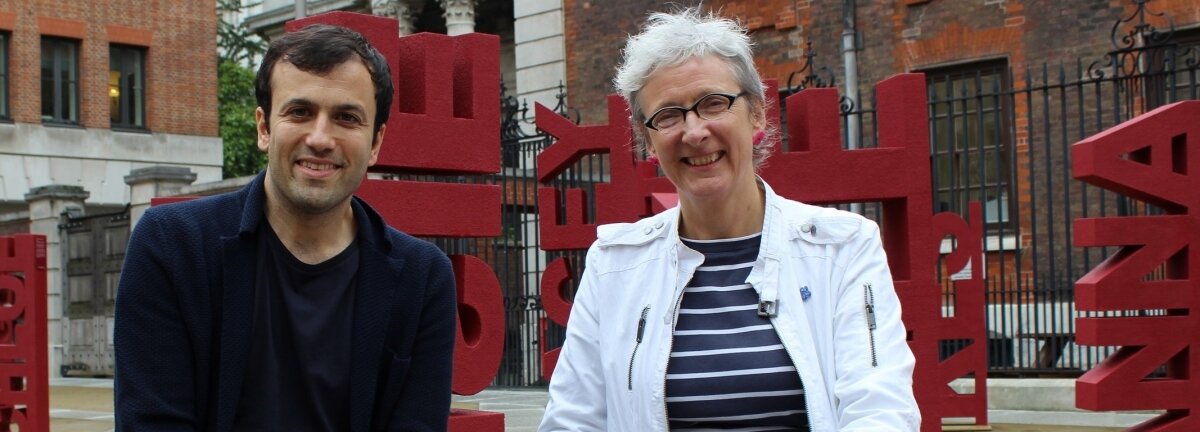Sarah Weir and Paul Cocksedge discuss how art design can deliver a public benefit

Design Council CEO, Sarah Weir met with internationally acclaimed British designer Paul Cocksedge. They discussed his ingenious and impactful outdoor art installation which aimed to raise awareness around the issue of Blood Cancer (during Blood Cancer Awareness Month), which affects hundreds of people across the UK with 104 people being diagnosed each day.
Paul Cocksedge explained how he came up with the concept design, and why he took on this important creative process to raise awareness for such a major public health challenge.
Why was the installation designed and created in this unique way?
This installation was about taking an important issue and raising awareness in a way that’s intriguing for people – so they’re drawn to it, even though they may not immediately grasp what it’s about. What follows is a process of discovery, as people understand the layers of meaning.
How did you formulate the idea and roll it out?
Instead of the idea for this coming from the studio alone, it needed to be collaborative; so, it was important for us to involve the patients. It was about creating a place for their stories, and turning the two-dimensional data, we had – the 104-people diagnosed with a blood cancer every day in the UK – into something three dimensional.
Design Council were delighted to see such an inspiring piece of work by talented British designer Paul Cocksedge. His work in raising public awareness around those living with blood cancer each day is a great example of how purposeful design can deliver a public benefit.
Design Council CEO Sarah Weir
What was the particular ‘beauty’ of the installation for you, and what challenges did you experience if any?
The beauty of this project was that it gave us a chance to use our skills as a design studio in an area that’s completely new to us. The unique challenge was how to use design to raise awareness of blood cancer, and we wanted to make something that would be a beautiful, well-made sculptural piece, but also intriguing enough for the public to become interested in its deeper purpose. The most important thing was to spread the word about the symptoms of blood cancer, and also tell the 104 patients’ stories. We have design experience but we haven’t experienced the story of blood cancer, so this piece really came down to that collaboration between us and these people, which is what made it so human.
What advice do you have to other designers who may want to approach such an important message for public benefit in the future?
Designers have a broad skillset, and a lot of knowledge about different things – materials, engineering, science – which makes design a powerful tool. However most of the time, unfortunately, designers’ opportunities are closely linked with the commercial world. I think if there were more chances for designers to tackle projects like this, there’d be a lot of surprises – in a good way.
Paul's ingenious and impactful installation has not only engaged the hundreds of people who saw it and heard about it, but will also stand as a great example of the design talent that we possess across the United Kingdom.
Design Council CEO Sarah Weir
Subscribe to our newsletter
Want to keep up with the latest from the Design Council?
